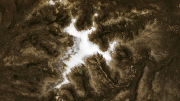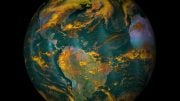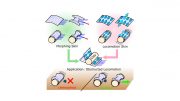
Scientists studying the DNA of Filipinos have found that, rather than farming, climate change may have played a more significant role in driving the mass movement of populations in various directions.
Over 50 millennia, at least five major immigration waves have successively populated the Philippines, the most comprehensive survey of genetic variations in the country to date shows. This Uppsala University study, published in the scientific journal PNAS, comprises 2.3 million DNA markers from some 1,000 individuals.
“Our findings suggest that instead of farming, climate change may have played a more important role in driving the mass movement of populations in various directions,” says Maximilian Larena, researcher at Uppsala University’s Department of Organismal Biology and first author of the study.
The Philippines’ more than 7,000 islands have always been a link between Southeast Asia, Australia, New Zealand, and the Polynesian islands of the Pacific Ocean. For millennia, the archipelago has served as a corridor for migration from one continent to another.
In a new study, a group of researchers from Australia, Taiwan, the Philippines, and elsewhere, led by Uppsala University, reveal the huge scale and complexity of the Filipino population’s origins, kinship patterns, and genetic diversity. By typing 2.3 million DNA markers that are variable in us humans, and then using computational methods, the scientists have investigated the Filipinos’ DNA. In doing so, they analyzed these markers from more than 1,000 individuals, representing 115 Filipino cultural groups.
The study shows that over the millennia, at least five major waves of immigration built up the population of the Philippines. Different ethnic groups arrived successively. Negritos, the first Filipinos, were followed by various groups, including those who call themselves the Manobo and Sama.
The last three population waves occurred between 15,000 and 7,000 years ago — a period in which climate change caused geographical transformations of the region. Sea levels rose, for example. Sunda, until then a large, fertile land mass between Southeast Asia and Oceania, was inundated and the land bridge between Taiwan and southern China was submerged beneath the waters.
“Our study debunks a view that has dominated research on human history: that language, ways of life, culture, and people move together as a single unit — a ‘Neolithic package’, as it’s often called. We’re able to show that new groups of people migrated to the Philippines more than seven millennia ago, and it was these groups that took the Austronesian languages with them. It wasn’t until three thousand years later that agriculture was taken there, probably by related groups. So that happened a long time afterwards,” says Professor Mattias Jakobsson, senior author of the study.
Reference: “Multiple migrations to the Philippines during the last 50,000 years” by Maximilian Larena, Federico Sanchez-Quinto, Per Sjödin, James McKenna, Carlo Ebeo, Rebecca Reyes, Ophelia Casel, Jin-Yuan Huang, Kim Pullupul Hagada, Dennis Guilay, Jennelyn Reyes, Fatima Pir Allian, Virgilio Mori, Lahaina Sue Azarcon, Alma Manera, Celito Terando, Lucio Jamero Jr, Gauden Sireg, Renefe Manginsay-Tremedal, Maria Shiela Labos, Richard Dian Vilar, Acram Latiph, Rodelio Linsahay Saway, Erwin Marte, Pablito Magbanua, Amor Morales, Ismael Java, Rudy Reveche, Becky Barrios, Erlinda Burton, Jesus Christopher Salon, Ma. Junaliah Tuazon Kels, Adrian Albano, Rose Beatrix Cruz-Angeles, Edison Molanida, Lena Granehäll, Mário Vicente, Hanna Edlund, Jun-Hun Loo, Jean Trejaut, Simon Y. W. Ho, Lawrence Reid, Helena Malmström, Carina Schlebusch, Kurt Lambeck, Phillip Endicott and Mattias Jakobsson, 22 March 2021, Proceedings of the National Academy of Sciences.
DOI: 10.1073/pnas.2026132118









Be the first to comment on "Largest-Ever DNA Mapping of the Philippines Shows 5 Major Immigration Waves Over 50 Millennia"